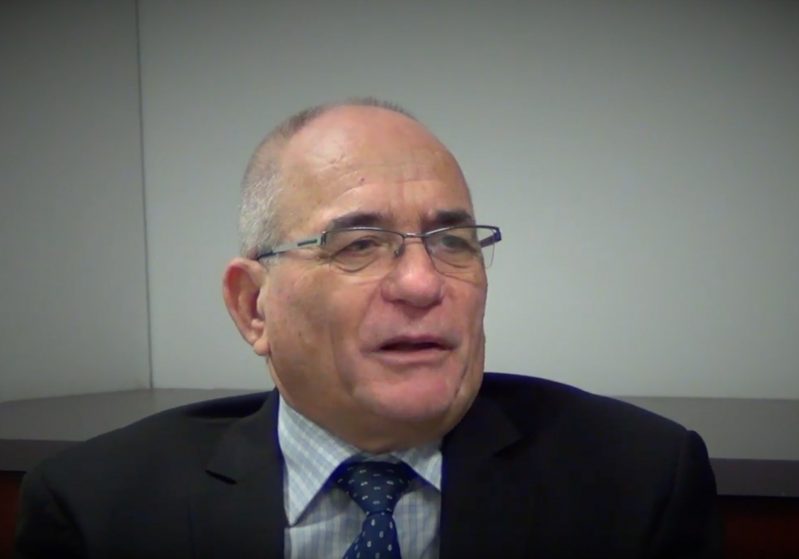Australia/Israel Review
Media Microscope: Tooning Out
Dec 20, 2012 | Allon Lee
Allon Lee
As mentioned in last month’s “Noted and Quoted”, on Nov. 21, at the conclusion of the recent Hamas-Israel fighting the Age published a highly provocative cartoon by Michael Leunig which paraphrased German pastor Martin Niemoller’s famous epigram (“First they came for the…”) to position the Palestinians as today’s equivalent of Holocaust victims. It also referred to how “doors would close” and “bitterness and spiteful condemnation” would be applied to those who speak out for the Palestinians.
What followed was a series of bizarre decisions by the Age that threw doubt on that paper’s commitment to offer balance on a sensitive issue involving the Holocaust.
First up, two letters appeared on Nov. 22 praising Leunig’s cartoon but none that were critical.
Nine days later the cartoon reappeared in the Age, this time on the opinion page accompanying a rather unconvincing defence of the cartoon by Harold Zwier of the Australian Jewish Democratic Society, “Is [Leunig] being too playful about the plight of the Palestinians in complaining overtly about silence as a form of tacit acceptance and covertly that publicly criticising Israeli treatment of Palestinians will be met with anger – from ‘the all-powerful Jewish lobby’?… The cartoon is also clever, because the reaction of the Jewish community as articulated in the Anti-Defamation Commission media release is in fact encapsulated within the cartoon,” Age (Nov. 30).
Except at this point, no Jewish communal response to the cartoon – nor any other criticism of it – had either appeared or been reported in the Age!
Finally on Dec. 3, a short critical letter appeared, courtesy of AIJAC Executive Director Colin Rubenstein, alongside two pro-Leunig letters.
On Dec. 11, Leunig himself penned an op-ed on the matter, showing he sees Israelis and Palestinians as total binary opposites: “it looks like the Palestinians have been massively robbed and abused, and are engaged in a desperate struggle for survival and liberation. Israel on the other hand would appear to be conducting an imperialistic campaign of oppression supported and substantially armed by the most powerful nation on earth”.
Leunig dismissed any whiff of antisemitism in his work, saying – “If only there was some sort of test I could sit for to clarify the situation, but there is no science to this obsessive and vapid denunciation. It’s cynical, it’s bullying and it’s lazy.”
An op-ed by Anti-Defamation Commission Chairman Dr. Dvir Abramovich – who was mentioned critically by Zwier – ran on Dec. 12 in the rival Australian, after a version of the piece was refused publication in the Age, “This all-powerful cabal of elders did not prove omnipotent enough to prevent Leunig from publishing his cartoon and yesterday’s piece… Conspiratorial stereotypes about a predatory Jewish lobby that intimidates Palestinian supporters into silence have no place in any newspaper. The Anti-Defamation Commission, a human rights organisation… asked The Age for an opportunity to provide a balancing response to Leunig’s cartoon after it was directly attacked in another opinion…The Age would not publish its objections because [the paper said] its claims about the cartoon were unreasonable… Leunig accuses the Jewish community of closing doors. That is exactly what The Age did.”
On Dec. 14 the Age opinion page finally featured a critique of Leunig by Nick Dyrenfurth, a contributor to Drawing the Line: Using Cartoons as Historical Evidence.
“Depicting a genocidal Israeli Goliath pitted against a Palestinian David is laughably obscene. One would have thought that ‘Nazi Israel’ might have eradicated its enemy after 64 years. During the systemic and cold-blooded extermination that was the Holocaust, the world’s Jewish population fell from 18 million to 12 million. By contrast, since the founding of Israel in 1948, the Palestinian population in Gaza, the West Bank and Green Line Israel has grown from 1.2 million to some 5 million… Criticisms can be made without resorting to Nazi comparisons. Such analogies are intellectually lazy, deliberately cruel and counter-productive attempts to simplify a complex political situation. Often they are anti-Semitic…Leunig is also arguably guilty of infantilising the Palestinians. The Palestinians have always exercised agency. They chose to violently oppose the 1947 UN resolution creating both Arab and Jewish states in Palestine, and badly lost the war that followed, resulting in what they call the ‘Nakba’…They also freely chose to launch a violent intifada in September 2000, destroying peace negotiations that would have probably resulted in an independent Palestinian state…
“Perhaps the most odious aspect of such comparisons is what Man Booker Prize-winning British author Howard Jacobson calls the ‘you of all people’ slur. Nazi accusations ‘doubly damn’ Jews – to the Holocaust itself and what he calls ‘the moral wasteland of having found no humanising redemption in its horror,'” Dyrenfurth added.
Tags: Australasia






